Mulberry tree, what are the benefits of berries and leaves, how to plant and grow mulberries
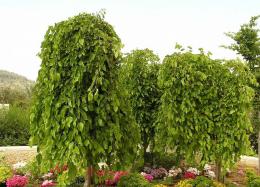
The mulberry tree is familiar to many under the name mulberry. In Russia and Ukraine, this tree can be found in many courtyards.
The berries are very tasty, both adults and children like them.
At first glance, it seems that the mulberry tree grows independently and does not require care, but this is not the case; there are some growing features that are useful for any gardener to know about.
Content:
- Mulberry tree - description
- Mulberry red, white, plant varieties
- Mulberry is a medicinal plant, beneficial properties of leaves and fruits
- Use in folk medicine
- Can pregnant women eat mulberry fruits?
- Mulberry cultivation
- Features of reproduction
- Harvesting, storage and processing
- Weeping mulberry in landscape design
- Interesting facts about mulberries
Mulberry tree - description
Mulberry is a tree that belongs to the mulberry family. To date, up to seventeen varieties of the plant have been bred. The tree is a fast-growing species, the maximum height is 15 meters.
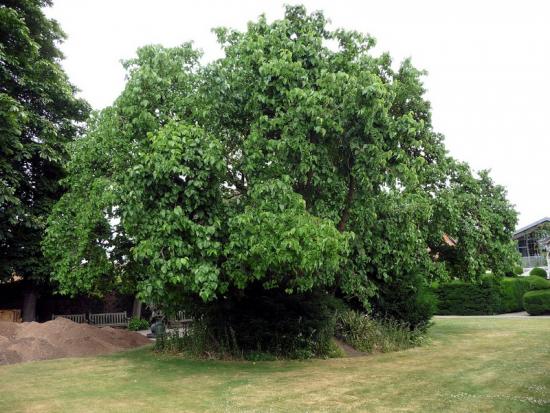
The best zone for mulberry growth is a subtropical and warm climate. In such conditions, a tree can live for at least two hundred years, a decorative mulberry - from three hundred to five hundred years.
The fruit reaches an average of two to three centimeters in length. The color depends on the variety and is available in black, purple, red and white. One hundred grams of fruit contains about 43 kilocalories.The berries are sweet, some have a pleasant sourness.
Mulberries are not transportable and are almost impossible to keep fresh. Can be consumed dried or fresh, and is widely used in cooking.
Mulberry red, white, plant varieties
Mulberry has 3 types, each of them is divided into individual varieties.
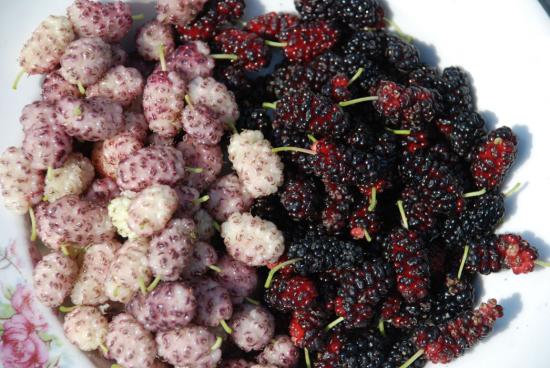
White has light green leaves, pink and white fruits, some varieties have a dark purple color. This species has gray thick bark and is frost-resistant.
The following varieties are common.
| White tenderness | The berries are large, very tender and juicy. The mulberry is five centimeters long, white in color. Famous for its high yield and long-term fruiting |
| Luganochka | The berries are pale pink and cream in color, sickly sweet, the length of the fruit is more than five centimeters. Productivity is high |
| Black mulberry | The birthplace of the tree is Iran. The leaves are dark green and rough. The color of the berries is black and purple. The berries taste sweet and sour and are shaped like blackberries. This species prefers warm climates, although there are frost-resistant varieties. Popular varieties: |
| Black Prince | Resistant to drought, the height of the tree is from 10 to 13 meters. This variety does not require pollination or regular watering. The first berries appear the next year after planting. The leaves are oval, dark green, the berries are black. Needs regular pruning and shaping |
| Hope | The variety is medium-sized. Height – ten meters. Pollinates on its own. Calmly tolerates hot climates and winds. The main feature is the ability of the fruit to stay firmly on the tree for quite a long time when ripe. The fruits are medium, length – 3 cm |
Red mulberry, the birthplace of this species is North America.It has a lush crown thanks to large leaves (leaf length is twelve centimeters).
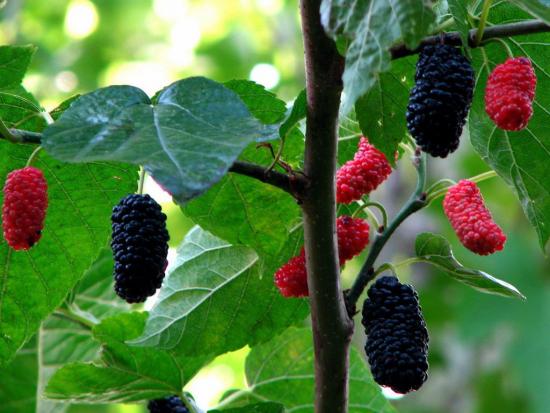
The berries are sweet with a slight sourness, the color is red; fruits that are too ripe become black. This species is similar to blackberries.
One of the varieties is Vladimir pink. The height of the tree is 6 meters; lower lateral shoots quickly form on the stem. The berries are bright red, sweet and sour in taste.
Each variety has its own pros and cons; before planting, you need to become thoroughly familiar with the crop.
Mulberry is a medicinal plant, beneficial properties of leaves and fruits
Mulberries are very useful for people of any age.
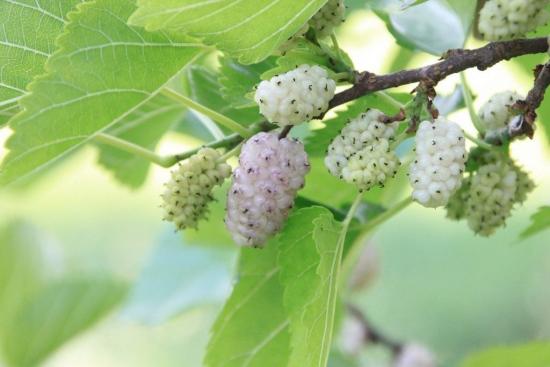
The composition of the fruits includes:
- organic acids;
- vitamins, especially ascorbic acid, tocopherol, nicotinamide, carotene, vitamin B and K;
- micro and macroelements (half of the elements of the periodic table);
- antioxidants.
Thanks to this composition, the berry is recommended for therapy against many pathologies and is used for culinary and cosmetic purposes.
The leaves are also a storehouse of vitamins.
In addition to vitamins, the composition includes:
- tannins;
- essential oils;
- flavonoids;
- calcium;
- sugar.
Mulberry leaves contain 2 times more calcium than milk. Therefore, this product is especially useful for people with lactose intolerance.
The foliage also helps very well with problems with blood vessels and the heart, reduces heartbeat, and normalizes blood pressure.
Thanks to these properties, many medicines that are widely used in folk medicine are prepared from the leaves, berries and bark.
We invite you to watch a video about the beneficial properties of the plant:
Use in folk medicine
Decoctions and fresh juice are popularly used to treat:
- diseases of the oral cavity (for example, stomatitis);
- tonsillitis;
- diseases of the biliary tract;
- tonsillitis;
- diseases associated with the gastrointestinal tract: dysbacteriosis, colitis, loose stools;
- bronchitis;
- pneumonia;
- hypertension.
An infusion based on berries and leaves is very useful for patients with non-insulin-dependent diabetes mellitus. Take half a glass three times a day.
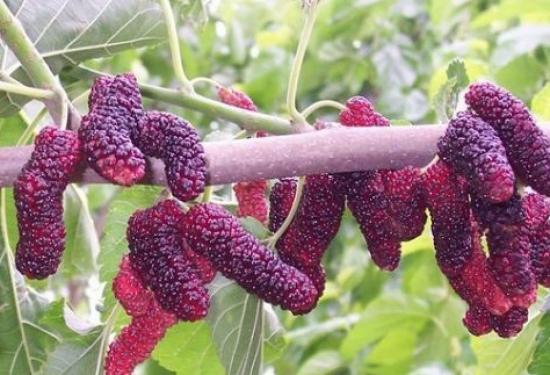
Mulberry has a good effect on human immunity, has an anthelmintic effect, and eliminates insomnia.
Effectively used to strengthen hair and rejuvenate skin.
Children are recommended to use juices or infusions from berries as a remedy for rickets and for the prevention of colds. The infusion has a pleasant taste, so children drink it with pleasure.
Recently it became known that decoctions effectively help with oncology and brain diseases.
It is important to consult with your doctor before treatment.
Can pregnant women eat mulberry fruits?
Mulberry fruits, due to their composition, not only can, but should be consumed during pregnancy. This will have a beneficial effect on the health of the expectant mother and the development of the fetus.
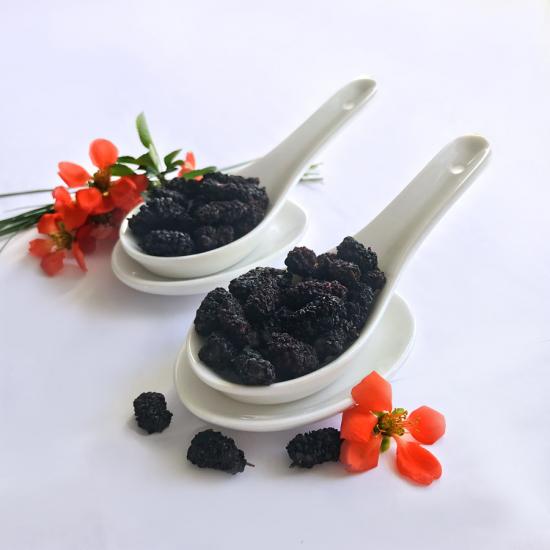
The effect of berries on pregnancy:
- While carrying a baby, the mother's blood circulation accelerates and there is a greater need for iron. If there is a lack of this element, anemia may develop. If mulberry fruits are included in the daily menu, this will not happen.
- Mulberry fruits allow a pregnant woman to avoid problems with hemorrhoids, constipation, varicose veins, and strengthen bone tissue and blood vessels.
- This product promotes the proper formation of the fetus and has a positive effect on bone structure and cell division.
- Tea made from berries acts as a sedative and has an antibacterial and anti-inflammatory effect.
However, there should be moderation in everything; it is recommended to eat a maximum of three hundred grams of berries per day. Otherwise, an allergic reaction may develop in the fetus or mother.
During breastfeeding, caution is important; you should monitor the baby’s reaction and condition and consult a pediatrician.
Mulberry cultivation
The following recommendations should be observed:
- There are no special requirements for soil selection. The main condition is the acidity of the soil, so that the harvest is large, the indicator should not exceed 7 pH.
- The area should be well lit so that the tree receives a lot of light and heat from the sun.
- Planting of seedlings is carried out in early autumn or spring. Expanded clay should be poured into the bottom of the hole to create a drainage layer. The roots of a young tree are weak and fragile, so the hole must match the size of the root system so that the roots are not injured when planting.
- After planting the seedling, the soil is pressed down and watered abundantly. The surface of the hole is mulched; for this you can use compost, dry grass or straw. This will allow the moisture to linger longer and not evaporate. You can add organic fertilizers.
- It is advisable to install a support and tie the plant until it gets stronger. You can plant a tree not far from the fence, stretch the wire horizontally so that the tree grows strictly vertically.
- Water the tree moderately until mid-summer, then stop this procedure. Watering is often carried out in the summer season, if there is heat and drought for a long time.
- The mulberry tree is not susceptible to diseases and pest attacks, so spraying is not carried out.
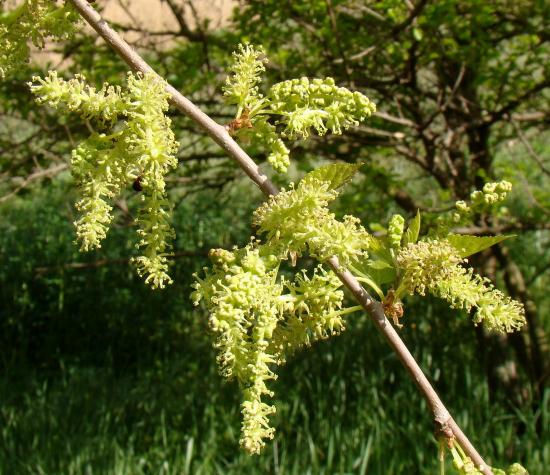
Non-frost-resistant varieties need winter shelter. To do this, it is necessary to cover the trunk with a rag or other available material.
Small seedlings are completely torn up; mature trees are not covered; it is enough to insulate the hole.
Let's watch a video on how to grow a mulberry tree:
Features of reproduction
Mulberry propagates by seeds and vegetatively:
- layering;
- cuttings;
- shoots;
- vaccination.
Cuttings are considered the most effective method of propagation. At the end of autumn, you need to cut off growths from the tree that are no more than a year old, and make cuttings from them, the length of which is no more than 15 cm (a neat oblique cut is made above the very top bud, and then a second oblique cut fifteen centimeters below).
The lower part of the cutting should be immersed in a growth stimulator for several hours. Then the shoot is dropped into a container with sand for the entire winter period. In early spring, when the buds begin to bloom, you can plant the cuttings in open ground; only the crown, two or three centimeters, should remain on the surface.
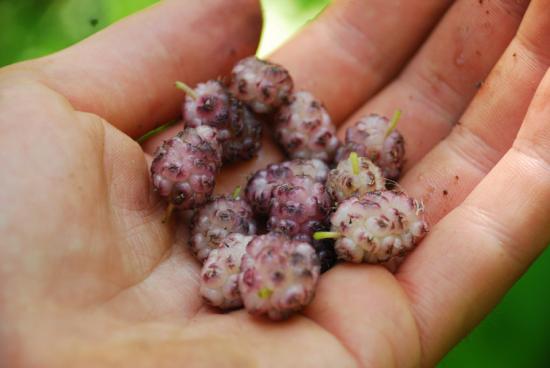
The distance between the shoots is twenty to thirty centimeters. By next autumn, the cuttings should have enough roots for replanting; the seedling can be planted in a permanent area.
For propagation by grafting, only cultivated varieties are taken using budding.
Seed propagation is possible, but it takes a lot of effort and time. The main condition in this case is stratified seeds.
The seeds are placed in a cold, damp environment for several weeks or months; this will allow the seed to successfully adapt to open ground.
Sowing begins in early March. The disadvantage of this method is the late fruiting; a tree grown from a seed will produce a harvest in the seventh or eighth year of life.
Harvesting, storage and processing
There is no specific harvest date, since mulberry fruits ripen gradually and are harvested many times. Ripening occurs approximately in mid-May, and lasts until the last days of August, the period depends on the mulberry variety.
You can pick the berries by hand or by shaking off the berries and placing a film or cloth under the tree. Collection is recommended to be carried out in the morning in sunny weather.
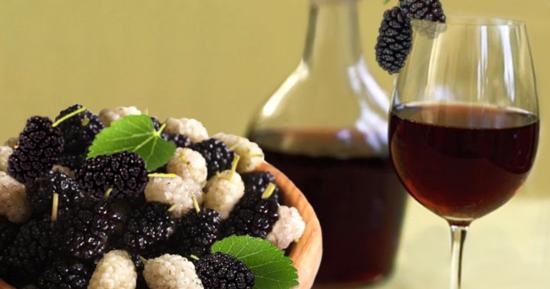
If the collection was carried out by shaking, the fruits must be sorted, separating the berries from branches, leaves and unripe fruits. It is not recommended to wash them, as this can damage the delicate skin of the berries.
Food can be stored fresh only for a few hours, a maximum of a day. For further storage, it is recommended to dry the berries, for example, in the fresh air, scattering the fruits on a fine wire rack. T
You can also dry them in an oven or dryer (the temperature in the dryer is initially about 35 degrees, after six to eight hours - a maximum of 50 degrees). The dried product is stored in a glass container under a lid.
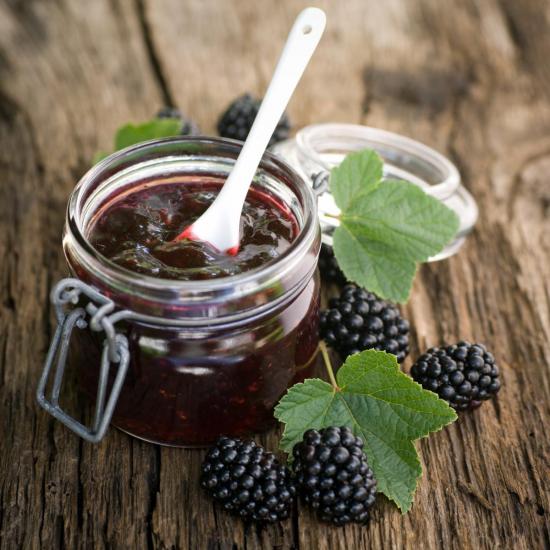
You can also make delicious jam by adding tangerine or lemon for flavor. Zakatka can be stored for a long time; it is a good delicacy in winter.
Weeping mulberry in landscape design
Weeping mulberries are often used in landscaping due to their shape and size. Regular mulberry trees reach a height of at least ten meters.
Weeping varieties are low, maximum height is 3 meters. The branches are thin, but long, hanging neatly, reminiscent of a willow or willow tree from afar.
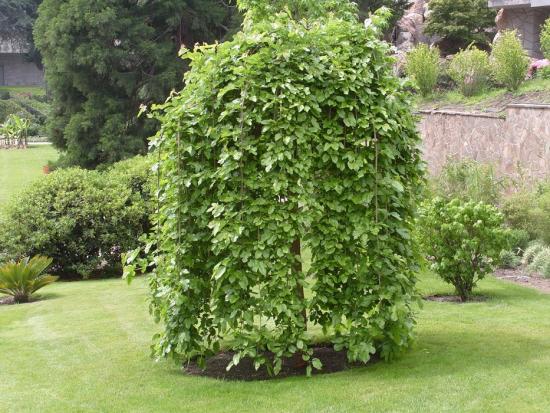
This tree is also used for decoration because it remains presentable even in winter. The main thing is to create a beautiful shape, for example in the form of a ball, using artistic trimming.Such trees are often used to cultivate parks.
Interesting facts about mulberries
In fact, there are many facts about mulberry, here are some of them:
- On a British island in a monastery there grows a mulberry tree that is more than 900 years old, making it the oldest tree of its family. The crown size is more than six hundred square meters.
- Mulberry wood is used to make various musical instruments.
- In the east, the mulberry is considered the tree of life, and the fruit is considered the queen of berries. There is a tradition that the mulberry symbolizes respect for ancestors and family values, so in many villages it is customary for the whole family to set tables under the tree and have fun.
- In Cyprus, a festival dedicated to silkworms is held every year.
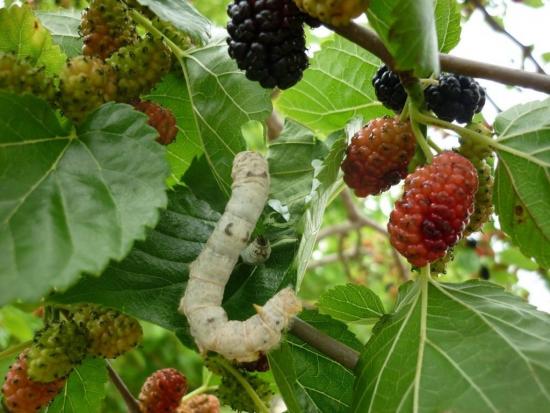
So, there are many types of plants, the fruits of which are very useful for people of all ages.
Decoctions and infusions made from this product help cure many diseases.
The tree does not require special agrotechnical skills, it reproduces easily and bears a lot of fruit throughout the summer.


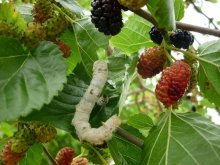
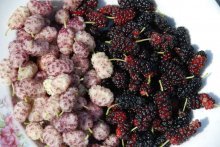

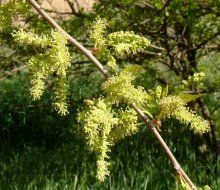

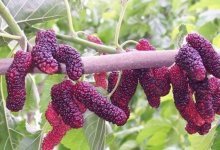
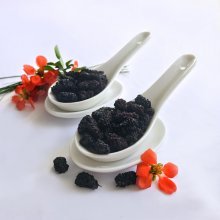
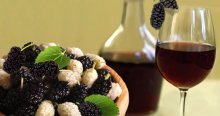
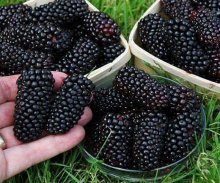
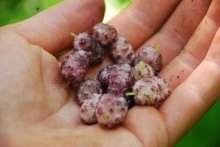
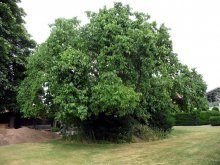
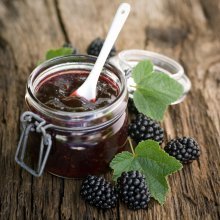
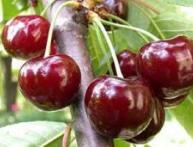
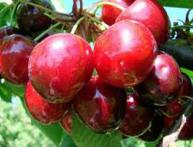
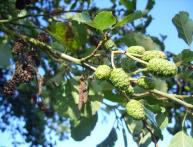
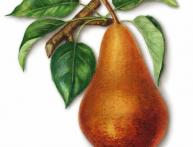
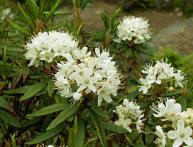
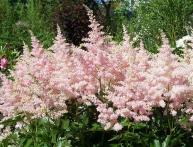
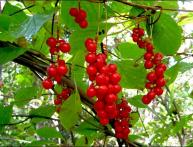
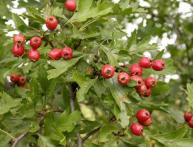
Comments
Growing mulberries is as easy as shelling pears, but you need to be prepared for the fact that the ripened fruits from the tops will fall to the bottom and make a lot of dirt on the road. We once had mulberries for a very long time.
I really like mulberries, although they don’t plant them in their gardens, but there are a lot of them in various parks in our city. Red mulberry has a sweetish-sour taste, it is much tastier than white mulberry, which is more bland. I didn’t know that mulberries can be grown from cuttings. I'll have to try planting it in the front garden.
We don’t grow mulberries in parks or on the streets because they create dirt. Mulberries are very healthy and tasty, if someone offered me to eat them now, I wouldn’t refuse.
I associate mulberries with hot summers and the south of Russia. Last year, we vacationed in Kerch in June, when the mulberries were just ripe! There, these trees grow throughout the city as street greenery. Delicious sweet fruits ripen and fall straight onto the sidewalk. And from one local grandmother, we bought a jar of mulberry jam. Incomparable excellent taste. A gorgeous berry, if it weren’t for the fact that I live in St. Petersburg, I would have planted it at the dacha.